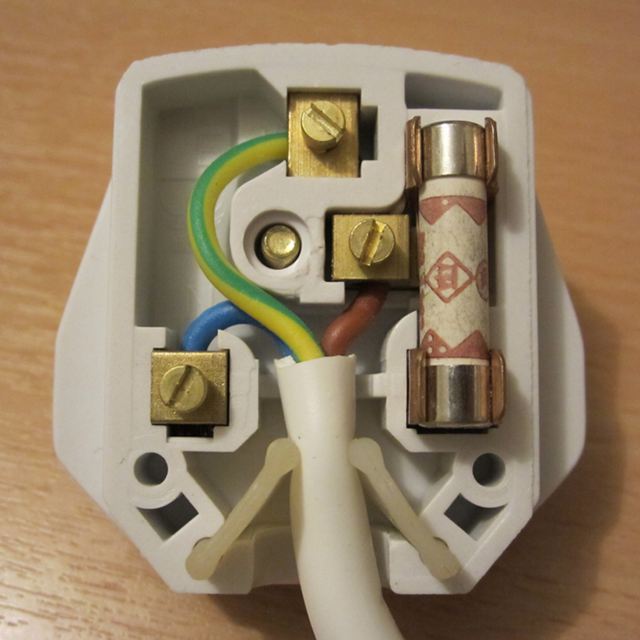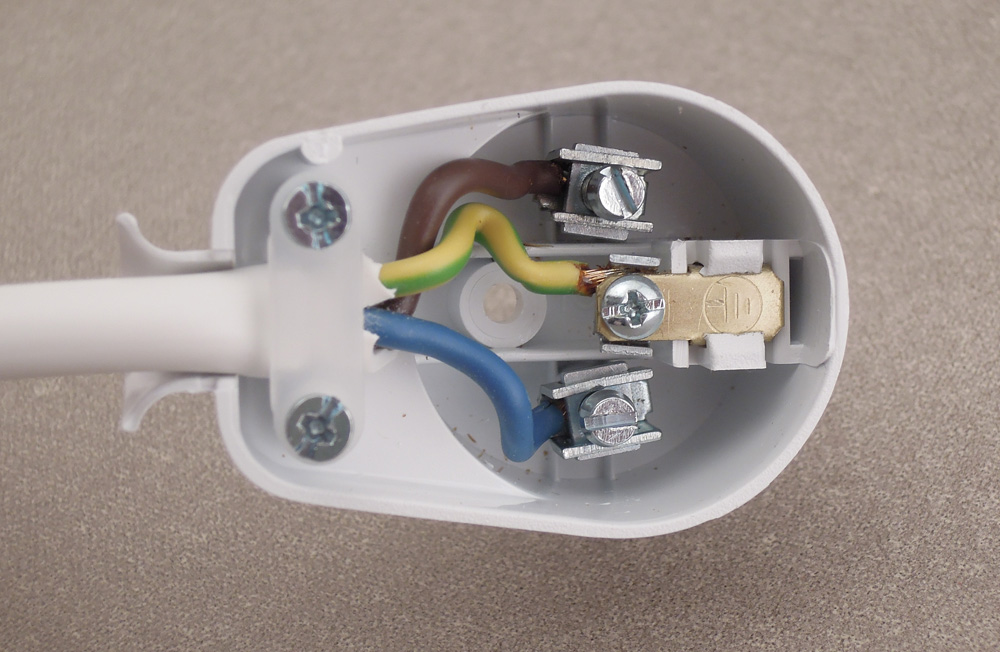doesn't it still mean that the electrical appliance (radio or TV or whatever it is) is still live when using an adaptor
There is no risk because there are no fuses, breakers, anything like this in plugs and sockets. RCD is somewhere in the flat (if somebody is lucky, because it's still not very common, in new installations it should be installed, but older norms demanded it only for "wet" rooms like bathroom, even older ones, from something like 30 or 40 years ago, didn't demand it at all; RCD is quite a new solution - earlier the only security means was a traditional fuse, often one for the whole flat, and the earth pins in sockets were connected to the N wire - when the voltage appeared on e.g. the metal casing of a device, it blew the main fuse, at least if the installation was made correctly and was in good condition, because for example breakage of N somewhere near the main fuse was very dangerous), but never in the plug, socket, never in the appliance, so the user can be sure that it breaks L, and not N.
In walls L and N are distinguished. Correctly N should be marked by a wire with blue isolation, PE by yellow-and-green one, L by brown one or of any other color. But never take this color markings for granted! For example in lightning circuits the yellow-and-green is used often as a live wire, because if you want to buy a 3-wire cable (to install in the wall), the easiest to buy is the one that has wires of colors: brown, blue and yellow-and-green.
If somebody is doing something inside an appliance and wants to be sure it's not live, he/she unplugs the plug from the socket.
Sometimes there are plugs with a switch (such ones to install them on the cable on your own, for example if the original one is broken - like in the photo a few posts before - rather than original ones installed by device manufacturer, which are impossible to disassembly), but they don't ensure that there is no voltage inside the device.
This could also, I guess, mean that any fault triggering the RCD could still occur and cause either a shock or fire risk.
I am not an expert, but according to this:
ise.pl/index.php?option=com_jfusion&Itemid=39&jfile=viewtopic.php&f=23&t=13209 (forum of electricians)
RCD controls the geometrical sum of currents in wires: L1, L2, L3 and N - if it's greater than the given value (parameter of the RCD) it will break the circuit.
If there is short circuit to the appliance casing and then to PE or to ground (L-PE, N-PE) then the current leaves the circuit omitting the RCD - thus geometrical sum of currents is much greater than the one with which the breaker is triggered.
If there is L-N or Lx-Ly short circuit, then the RCD will not work (but then the traditional fuse or breaker works).
The current flows in to the circuit, the same current doesn't flow out, because it flows through a human to ground - then it doesn't matter if it has a way to return to the RCD, or not, RCD will be triggered.
But remember that if it's an installation in Poland, there is very often no RCD at all. And it might be OK from the legal point of view - it depends only on the time when the installation was made.
RCD won't disconnect N unless it's incorrectly installed or workers of the energy supplier made a (very costly) mistake and exchanged L and N somewhere outside the flat. There were even situations then during works they connect by mistake two different phases instead of L and N and then in sockets there is 400 V instead of 230 V (of course for a moment, until they see their mistake). This is even more costly, the energy suppliers must return money to people for the damaged devices, but I've heard about such situations.
I would add that in the past it was very common that the lightning switch disconnected N instead of L. Normal switch, of course, not a breaker.




